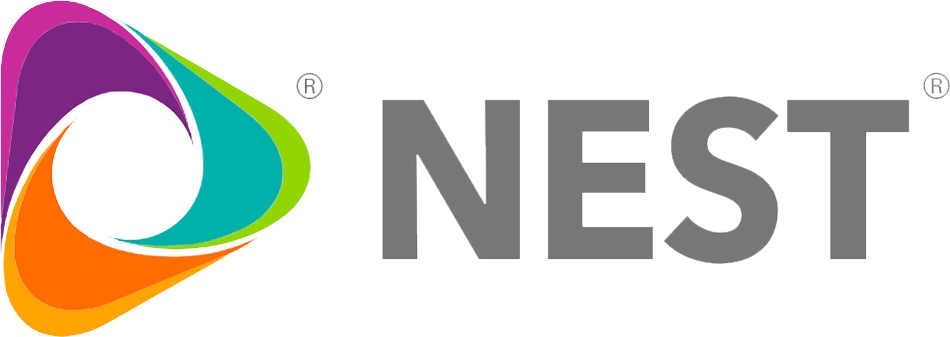While Integrated Facilities Management (IFM) has transformed the role and practices of facilities management (FM) for countless companies, myths surrounding its implementation, usage, and value persist.
Here, we address six common misconceptions about IFM.
1. Cost Cutting Has Been Maximized一There Are No Additional Savings to Capture
Not true. Cost cutting refers to slashing expenses in exchange for a reduction in FM services. Without an IFM program in place, companies on the hunt to improve their bottom line often curtail FM expenses in an ad hoc manner. Reducing so-called “high” preventative maintenance costs, for example, may provide a few dollars of relief in the short term. But these cuts may lead to increased equipment downtime, site closures, and less foot traffic (and revenue) in the long run.
An IFM solution such as NEST’s approaches FM costs holistically, with a total cost approach that factors in these types of interdependencies. When efficiencies are optimized across all components一tweaking preventative maintenance to improve equipment Mean Time Before Failure (MTBF), for example一cost savings from less downtime and fewer fixes is possible.
2. IFM Is Too Expensive
Not true. IFM is not strictly a cost. IFM can be a benefit to your company, its bottom line, and strategic progress for years to come. Standard FM programs may be nominally less expensive, but in the context of corporate health and future growth, your existing FM program is probably costing you more than you think.
Integrated work order management software with automated workflows such as NEST’s Facilitate is key. Deploying this platform saves time by decreasing human involvement with tasks, which is often more expensive in the long and short run. And Facilitate is free to access by all users, including service providers. Unlike legacy cost models, there are no subscription or “tech fees” charged to use the NEST platform.
An IFM program improves organizational capability to scale up or down faster and more efficiently than a standard FM program can. When the coronavirus pandemic forced immediate closures of retail sites across the country, for example, those companies with IFM programs in place could adjust staffing, cleaning protocols, and other components more quickly and easily than those without.
Other IFM features include financial planning, analytics, and consulting to identify inefficiencies and opportunities across your FM program that translate to bottom-line savings and a more robust strategic footing going forward.
Assets maintained through robust preventative and proactive maintenance programs not typically optimized in most standard FM programs, stay healthy for longer saving you money on future repairs and replacements.
IFM also includes access to vetted service provider delivery with scaled pricing. This saves dollars in procurement, compliance, and first-time fix costs.
3. We Don’t Need IFM, Our Facilities Look Fine & Are Running Smoothly
Probably not true. Sure, everything is working well and looking good, but could it be doing better? Without an IFM to improve operational efficiencies and identify savings opportunities, you could be leaving money on the table.
A quality IFM partner such as NEST uses proprietary technology to provide exceptional program visibility, uncover inefficiencies and potential risks, and unlock opportunities you never knew were there. In addition, NEST’s tenured professionals have decades of industry experience and expertise and can share industry best practices for additional improvements and savings.
4. An IFM Program Is Too Difficult to Implement
Not true. Implementing an IFM program is a complex undertaking. But with the right IFM partner, the implementation process can be efficient and reasonably swift, with most implementation projects completed in about 90 days. And a standard implementation without operating system integrations comes at no cost.
With a best-in-class IFM provider such as NEST, you’ll get the backing of a deep and experienced implementation team to support all involved employees, step by step, throughout the entire process. This includes customized planning, scheduling, technology installation, testing, training, and instruction, regardless of the current state of your existing FM program. Other components include integrating and training NEST’s independent service provider (ISP) network and other client-specific onboarding needs.
5. An IFM Program Is Too Difficult to Use
Not true. The need to be agile in the face of accelerating business change is increasingly important for organizations to stay competitive. FM plays a pivotal role in this endeavor, as it impacts places, people, processes, and systems throughout the company. And, as the complexity of organizational needs increases, so too the demands placed on FM.
Global management consulting firm McKinsey & Company discusses an observed progression of FM program management that evolves from in-house tactical management to outsourced, integrated approaches in line with increased program complexity. In short, adopting a strategic approach with IFM helps manage growing complexity more effectively than with a tactical FM program.
While learning to use a powerful new platform can be challenging at first, with the right support, it’s easier than you might think. NEST’s proprietary technology platform, for example, is easy to learn and use, with intuitive user dashboards that can be accessed from any device, anywhere. In addition, NEST Facilitate’s Client Advisory Board is made up of Facilitate users who are very familiar with the software and can lend insights when needed.
In addition, NEST’s 24/7/365 Command Center supports users regularly to achieve and maintain competency in platform use and understanding of the data it provides. Once employees experience streamlined workflows, better program outcomes, and the value an IFM program can provide to organizational strategy, using the platform will seem a breeze.
6. Implementing an IFM Program Always Leads to Job Losses
Not true. A quality IFM partner understands institutional knowledge, often residing within FM employees, is vital to the ongoing success of the program. In addition, IFM improves program efficiency and agility, which typically means employee roles are more likely to change than be eliminated.
Many FM professionals will find with an IFM program in place, their responsibilities increase because more can be done with a more efficient FM program. Finally, an IFM program such as NEST’s is designed to scale with the organization, and predictably, scaling will increase FM program demands一including the need for human resources. If an organization isn’t growing, its FM program may shrink over time, and that will likely lead to job losses.
NEST’s IFM Solution
NEST’s industry-leading IFM solution can resolve inefficiencies, identify savings opportunities, and boost the bottom line. NEST has the expertise and experience to support any organization in the planning, implementation, and ongoing use of IFM to transform its FM program and better position it for growth.







